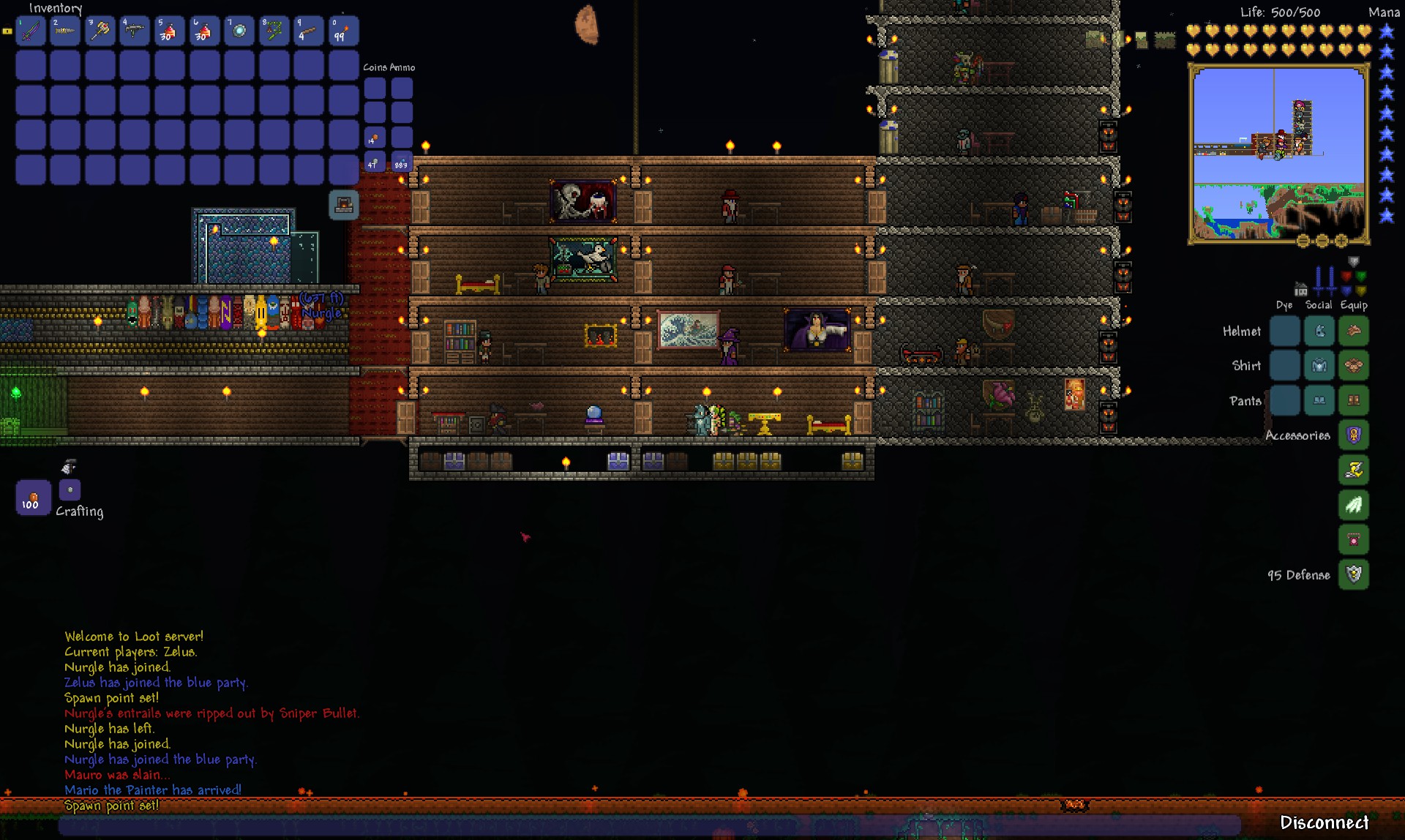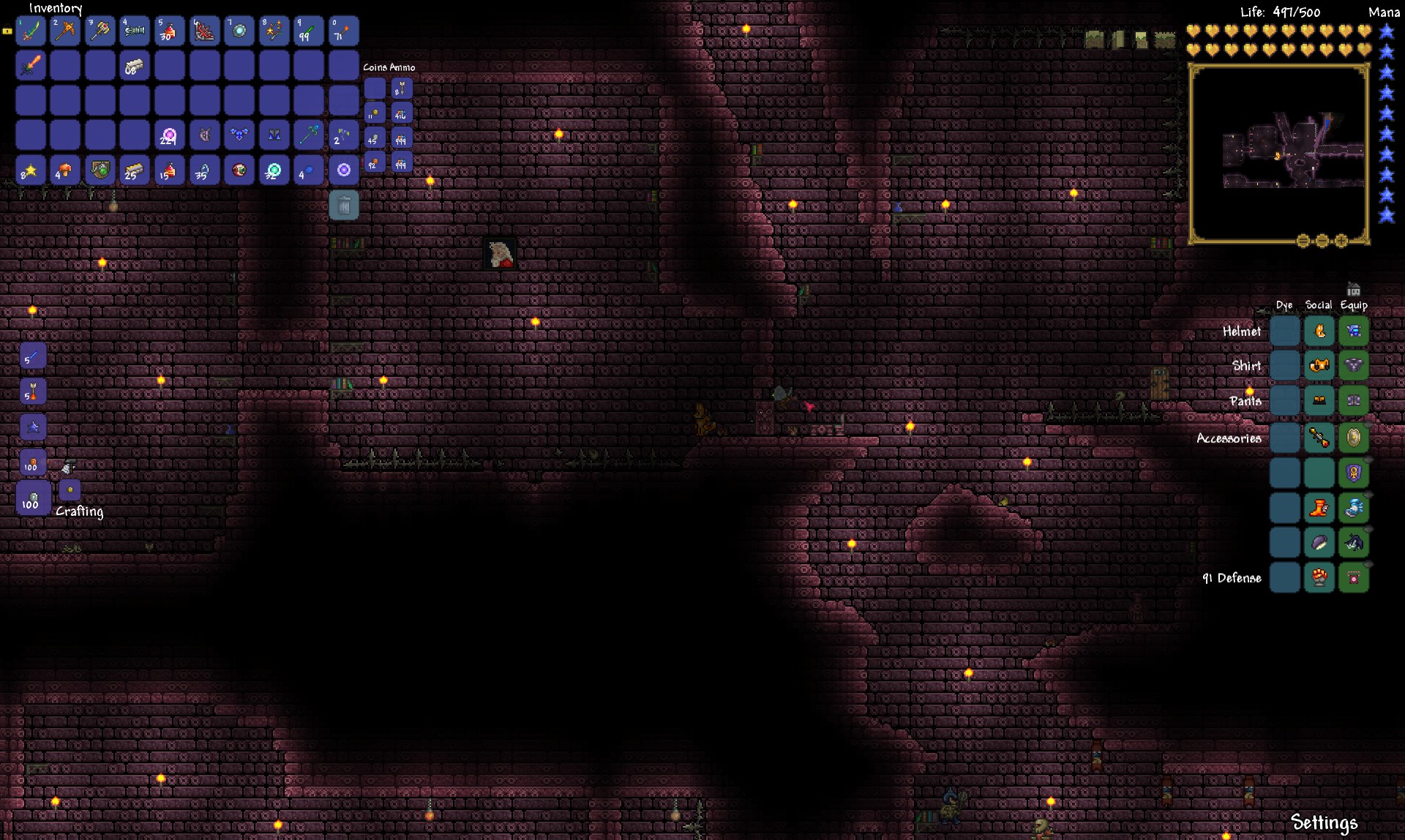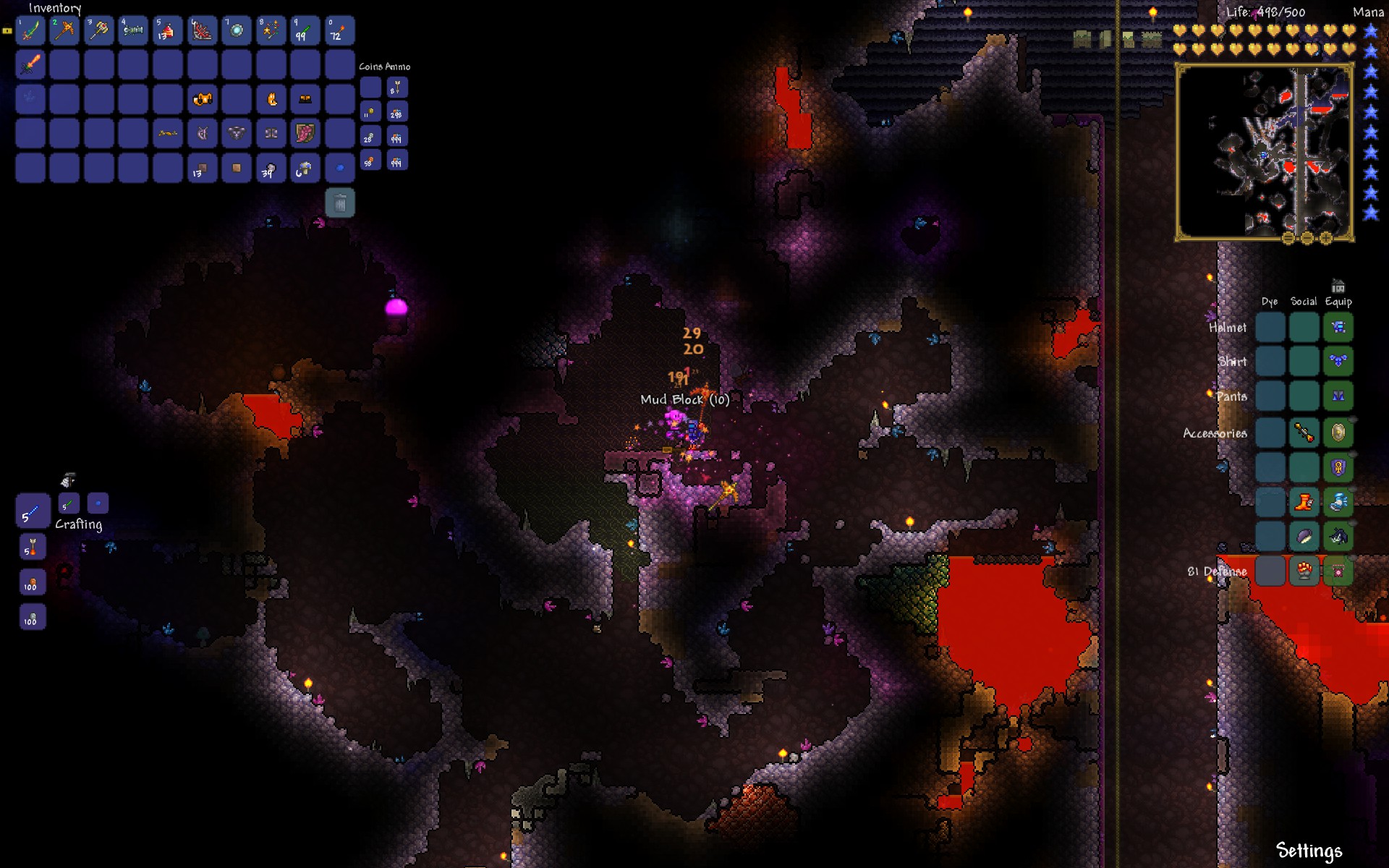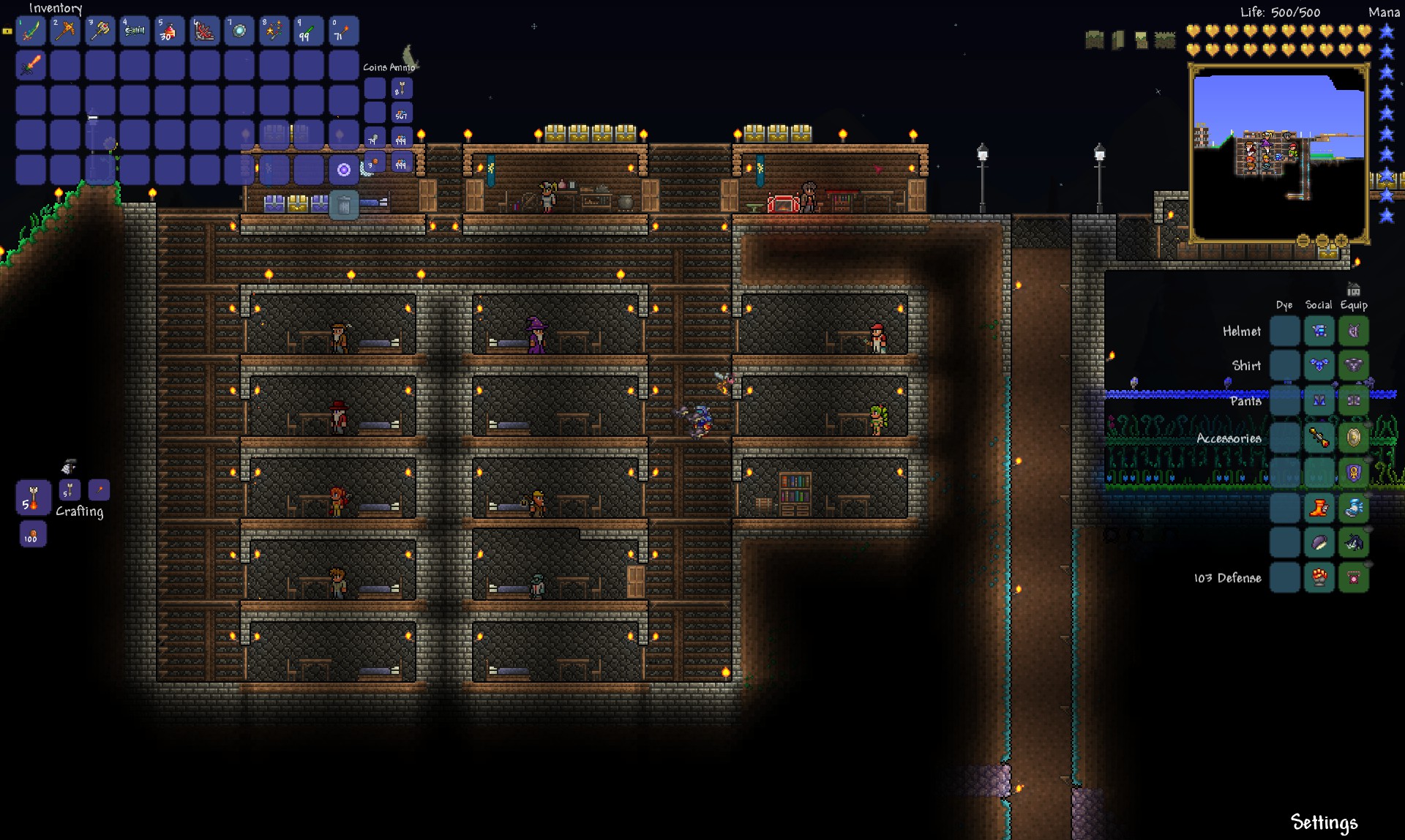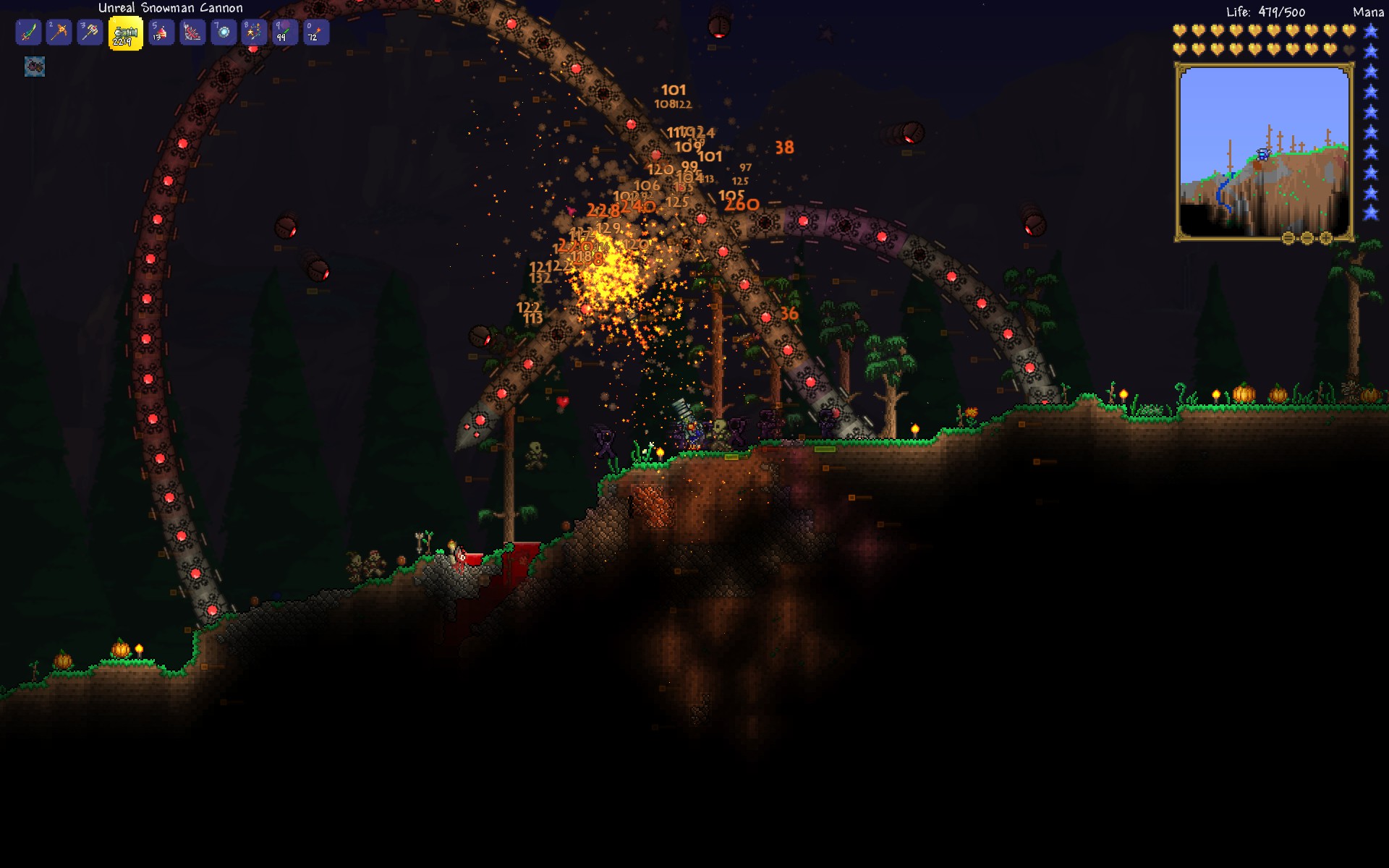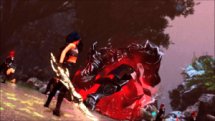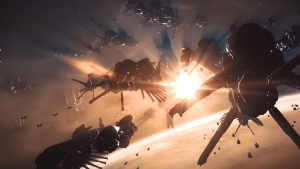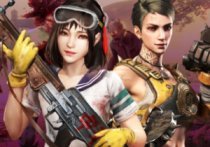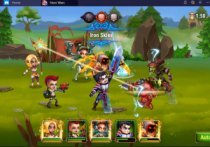Terraria 2014 Refresher Review
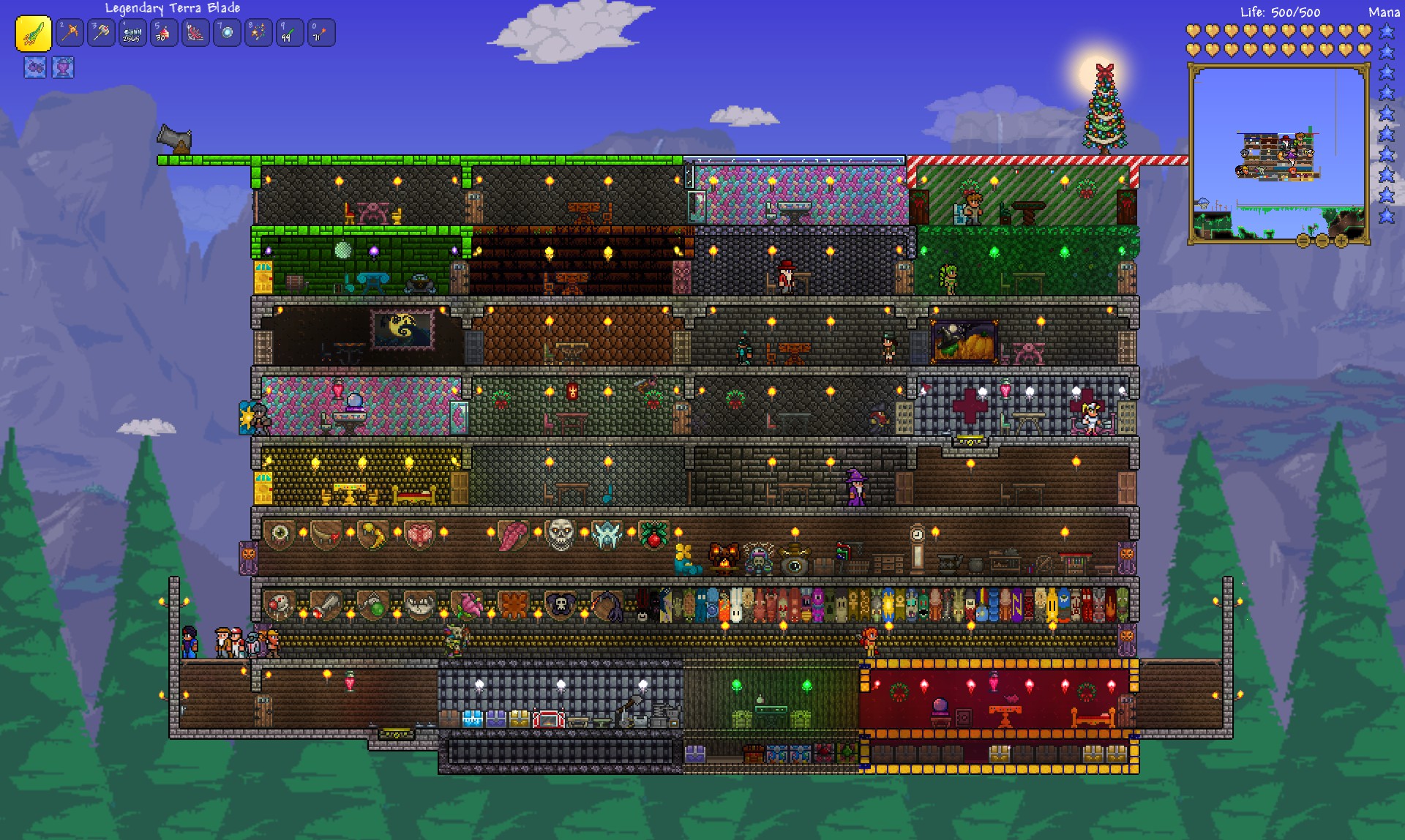
Terraria is a colorful sidescrolling mining and crafting game developed by Re-Logic, originally released in 2011. Though released on the Xbox 360, mobile devices, and the PlayStation Vita, this retrospective will largely cover the PC version. Warning: Contains some spoilers.
I first encountered Terraria in the wee hours of the morning while working on a project with some classmates in college. A member of the project was playing it while taking a break, and I asked him “Wow, what ugly game is that?”
“It’s Terraria,” he calmly replied, “It’s a lot like Minecraft.”
“It reminds me of Soldat.”
“Yeah – it plays like it too.”
The game looked cheap, but colorful – I was charmed by it after only a few minutes of watching my colleague play. Fortunately, Terraria was, and still is, an inexpensive game and now features far more bonus content than back in 2011.
Many comparisons between Terraria and Minecraft have been made; I made many comparisons myself when I first started playing. Both Minecraft and Terraria had their 1.0 debut at about the same time, and both feature mining, crafting, bosses, and exploration, as well as passionate communities egging on great development teams. On the surface Terraria and Minecraft are very similar, but after a few hours with each it’s very clear that they gravitate towards different goals with completely different execution. Just setting the record straight: Minecraft is not 3D Terraria, nor is Terraria a 2D Minecraft.
With hundreds of hours of playtime and many sleepless nights, let’s see what Terraria has become over the last three years:
Starting Out
In Terraria you play as a human who is prone to grunting whenever struck. Character creation is somewhat barebones, but functional: Name, hairstyle, and color options for hair, skin, eye, shirt, pants, and shoes are available. In reality, very little of character creation customization actually matters as it’s soon buried under armor and accessories. Two parts of character creation are important, the first being the character name as it’s visible to allies on the same team color. Though teams are optional, they’re very useful for locating and tracking other players (in both co-op and PvP play). The other important part is the difficulty option, which is character specific. Among the difficulty options are Softcore, Mediumcore, and Hardcore. When a Softcore character dies they will drop half of their money and respawn at their ‘Home’ location. Mediumcore characters will drop all of their inventory, in addition to their money, and then respawn, and Hardcore characters drop their inventory, are automatically deleted, and the player plays as a ghost until they close the game. Terraria allows players to have as many characters as they want in addition to locally saved worlds.
“I’m safe at home while Nurgle is out getting shot.”
Worlds in Terraria come in different sizes – small, medium, large – but they all work the same way. All worlds are procedurally generated; the generation sets up stuff like biome location, dungeon locations, and chest loot. Again, world creations are unlimited in number, but they’re each strictly the same set size throughout play.
When you first start playing Terraria it can be a little overwhelming – Players spawn into the world unceremoniously with a copper shortsword, pickaxe, and logging axe; no cutscenes, no narration, and no tutorial. The usual videogame tropes apply: Go kill stuff, horde loot, and try not to die. Upon the creation of a new world and spawning in it, players will start near an NPC called the Guide. The Guide serves as a rudimentary crafting reference sporting a side job as a very basic hint system. Talking to the Guide will prompt him to quip a one liner about the state of the world. For more detailed info, try offering the guide one of your materials, such as iron ore or a piece of stone, and he will reward you with a list of everything that the material is used in creating.
From there, you can do pretty much whatever you want, like fighting monsters, gathering materials for better armor, exploring the depths of the earth, and much more. Though it’s really tempting to look at a reference guide or a wiki during the first few hours of playing, I strongly recommend to go without them because the raw experience of exploration into the unknown to stumble your way through hundreds of crafting discoveries is nearly unmatched in today’s world of handholding tutorials and long winded expository narrative.
Controls
The controls in Terraria are somewhat MMO and FPS-ARPG inspired. All weapon and spell aiming is mouse driven while WASD, E, and spacebar control general movement. Additionally, the ‘Shift’ key is used for suggested items when the mouse is hovering over something interactable. The number keys correspond to items in the lockable hotbar, ‘H’ is used for quick healing – the ‘best’ healing item in your inventory – and the inventory and crafting menus are accessed with ‘Esc.’ While the player is (almost) always in the center of the screen, the speed at which players initially move takes some getting used to. At first, everything feels a little sluggish and out of reach but that soon changes with items like the Hermes Boots, Grappling Hook, and eventually, Wings.
Progression and Modes
The progression arcs in Terraria are differentiated by the mode that the world is in – which is different from the difficulty of a given character: Normal, Hard, and Post-Plantera. A world starts in Normal Mode where only the lower tiers of mineral deposits, enemies, biomes, and NPCs will appear. Upon killing the final boss of Normal Mode, the Wall of Flesh, Hard Mode is unlocked automatically and starts immediately. Upon entering Hard Mode new bosses, monsters, biomes, resources, NPCs, and events can be triggered or will start to appear by themselves. Hard Mode also introduces the spreading of the Corruption biome and the spawning of the Hallow, which covers a large swath of land and begins to spread like the Corruption. Once Hard Mode is “done” by killing the boss of the jungle, Plantera, the world itself doesn’t change but the summoning of even more powerful bosses becomes possible. On a site note, holiday events like the Pumpkin Moon and Frost Moon are actually manageable at this state of the world.
There is a small amount of character progression outside of gear and items: Players may increase the maximum health and mana pool of a given character by using health/mana crystals and health fruits acquired and crafted throughout play. Both health and mana are capped at 500 and 400, respectively. Gear and weapons can be dropped and transferred to other characters at will, but health and mana pools cannot.
The World
The World is full of different biomes which all have their own music, bosses, and loot. Jungles, tundra, caves, beaches, and Hell are among the many biomes, and each changes slightly when they become corrupted or hallowed (hardmode only). Depending on how the world was generated, different ores and biomes will be accessible; for example, some worlds have lead ore instead of iron ore and the Crimson biome instead of the Corruption biome. As players become more powerful it becomes easier to traverse these varied biomes. A common way of vertically exploring the world is by pillaring upwards to space and building hellevators (Hell Elevators) that bridge the surface and Hell by way of one large vertical shaft. Horizontal exploration is mostly influenced by character movement speed, but if you can afford wiring it up, teleporters eventually become available and are the fastest way to travel. Long underground tunnels are also possible, if you think it’s worth the time investment of creating them.
“Dungeon crawls are dangerous – be sure to light your way!”
Multiplayer
Multiplayer is a very large contributing factor to the longevity of playtime in Terraria. Everything in Terraria can be done with multiple people. Some boss encounters and dungeon crawls almost demand multiple people to fight through, and they’re much more entertaining for it. Coordinating people is sometimes a little difficult with text-only chat, but, as previously mentioned, team options help players locate each other on the map. Of course, like other multiplayer games, voice chat helps tremendously and makes the entire experience of exploring the game much more fun. Although Terraria doesn’t have a game browser or lobby system, finding other people to play usually isn’t an issue if you’re part of an existing gaming community or forum. Though the merits and mechanics of Terraria stand well on their own in single player, I think multiplayer is where Terraria really shines. Terraria doesn’t have any structured PvP modes but players on opposing team colors can hurt each other and make up their own game modes like CTF or deathmatch arenas. A thing to note about multiplayer is that items and stats are client-side character based, not server based, so a super powerful character can be brought to any server at any time.
Mining! (And other material gathering)
As implied by the title of the game, mining and other earthly resource collection makes up a large portion of the gameplay. Early on, most everything is related to resource gathering, but that takes a back seat as crafting, boss battles, and boss summoning becomes more important for upgrading and acquiring gear. Resource gathering becomes progressively easier and faster with the acquisition of higher-level equipment and access to mining buffs. Surprisingly, mining requires some precision and dexterity when being done quickly; monsters like to glomp you while you’re treading in unknown territory, and quickly defending and evading is crucial to keeping the mining run going.
“Mine. Craft. Mining, THEN crafting.”
Crafting!
There are a lot of things to craft – Decorative objects, tools, potions, food, armor, accessories, and quite a few more types. There are hundreds of items to play around with, and they’re all really simple to make if you know the recipe and which building area to stand in front of. Crafting takes place in the inventory/escape menu – a little odd, but it works – and it’s as simple as having the required items in your inventory, standing in front of the appropriate building area, and clicking the craftable from the inventory/escape menu. Certain craftables can only be made in specific building areas; for example, from spider webs you can craft silk while in front of a loom, and the silk is then used with wood in front of a table saw to craft a bed. Many craftables are used in other recipes, and some crafting chains expand from the early game all the way until post-Plantera mode.
Building, Housing, and NPCs
Housing for NPCs and yourself is nearly required for progression into the later parts of the game. Over time, NPCs will start to appear at the world spawn point and they’ll need shelter (or else they’ll die and respawn sometime later), so building housing for them is required if you’d like to access their wares conveniently. ‘Suitable’ living requirements for NPCs are really barebones, and it’s quite common to build low-income housing for them to begin with, but one of the more enjoyable parts of playing Terraria is being able to build a varied and unique looking town or mansion for you and your NPCs to inhabit. With dozens of decorative items, blocks, backgrounds, and traps, Terraria offers one of the most diverse 2D building experiences around. Unfortunately, there is no sandbox mode or in-game importing and exporting options for quickly building or sharing creations.
“Economy housing and symmetrical bases never go out of style.”
Gear & Loot
Depending on how you count, there are over 15 tiers of resource gathering tools and armor sets, which is far more than other games in the 2D genre (besides MMORPGs). The best gear is usually crafted, but some top tier gear is “better” than others depending on the named modifier prefix. All weapons and accessories have named prefixes that define their attributes. For example, ‘Ruthless’ melee weapons do more damage but have less knockback on-hit while ‘Demonic’ melee weapons have higher damage output and higher critical hit success. There are dozens of prefixes, and you can create builds for your character based on these prefixes. Though Terraria sports an item color rarity tier set like an MMO, the rarest items are not always the best. Again, like an MMO, there are named rare drops, chest-only rewards, and awesome craftable weapons, armor, and accessories which have their own special effects like firing light swords, healing on hit, and tanking damage automatically for allies.
Like in other games, some gear and drops are extremely rare. Most of the time enemies will drop material blocks semi-reliably, but others only drop when the enemy is in a particular biome or when certain weather/time conditions are met. Most frustrating among the drops are boss trophies and banners, which are used solely for bragging rights, and key molds used for crafting single-use keys for chests that contain the best weapons in the game. There aren’t any luck-based stats in the game, so drop influencing is limited to items and buffs which increase enemy spawn rates (as slight of a difference this makes).
Combat
The combat in Terraria is one of its strongest points, complimenting the variety of craftables and the many tiers of resource gathering. Generally, combat is skill based and rewards proper spacing, rapid attacks, and evasion from enemy attacks. It’s always beneficial to strafe while attacking and any chance to hitstun an enemy against a wall is not to be missed. There is a small amount of randomness in combat via critical hits, but the statistics of critical chances are well known and listed on the weapon being used. Combat difficulty is only an issue in a PvP situation or if you’re outnumbered; only bosses can reliably provide a challenge once you’re properly geared. Difficulty certainly spikes when the world game mode changes, but overall becomes easier as time goes on.
Throughout the game different potion ingredients become available and allow you to craft buffs, which temporarily aid in gathering resources or fighting. Though there are a lot of potion options, few of them seem truly amazing or unique. On the flip side of things, enemies can afflict debuffs on players; some of them are really annoying – like reversed controls – but most are manageable and fair.
The three stereotypical and archetypical RPG classes are present in the game: The warrior, who favors health and high armor stats alongside melee combat, the mage, with many flavors of magical weapons and accessories, and the ranger who uses bullet, rocket, and movement based weapons, armor stats, and accessories. Regardless of what style is being played, the equipped gear is ultimately the #1 factor for an encounter. Boosted heath, boosted mana, and buffs are helpful, but they don’t matter as much as the arcing swing of a sword or the total armor points a character has.
“Destroy it before it destroys you!”
Fighting bosses is really entertaining, and all of them can be fought repeatedly in a given world given the right conditions and materials. Defeating bosses provides the mainstay and long-term challenge in Terraria, at least until you’re geared for unstructured PvP. All of the bosses are unique and are both surprising and challenging to fight the first few times around.
Combat overall seems to favor high armor values and ranged DPS over magic weapons and spells. Although the magic has the higher ‘cool’ factor and is visually more appealing than melee and ranged projectiles, they don’t seem to pack the punch needed for quickly killing bosses.
Technical Issues and Limitations
Terraria originally suffered from a number of technical issues – many of which have been patched out over the last couple of years – but some game crashing and lag related issues still remain. Over the course of normal play the game is largely very stable, but one of the more annoying things that players will regularly encounter is the way liquids update in large lulls and chucks; during these large chunky updates it’s possible to accidentally clip into walls and die or be carried off by an invisible stream of water (or worse, fiery lava).
People hosting their own servers may experience crashes or lag when saving the game world or alt-tabbing, and players on the other side of the connection may sometimes become desynchronized and see phantom enemies or pieces of bosses attempting to attack them long after the danger has subsided. Terraria isn’t very tolerant of poor connections or large numbers of particle effects. Very often players will drop out with quick timeouts, and some enemies in the upper echelons of the Pumpkin and Frost Moon events can create enough particle effects to bring an NVIDIA 690 GTX to its knees. One of the largest limitations of Terraria is the engine it uses, which was built on Microsoft’s XNA platform, so it’s not available on all major platforms yet. Both Mac and Linux ports are in development, but it would have been nice to have the game on these platforms a bit sooner.
Conclusion: Excellent (5/5)
Besides a couple of technical issues here and there, Terraria is a real joy to play. It has a strong single player and multiplayer experience, tons of content, cool bosses, and a solid set of gameplay mechanics. A lot of time, care, and love went into the making of Terraria, and it continues on to this day in the form of various bug fixes and tweaks. Word is there’s a 1.3 update coming “soon,” which is phenomenal news for fans of the game. Though it may not be the prettiest 2D game on the market, it’s certainly one of my favorites. If you don’t already own it, I highly recommend it.
Articles You May Enjoy
- Thundercall Launching this April
- Global games publisher R2Games has just announced the Open Beta for its latest addition to its browser game library, Thundercall.
- Worlds 2016: Group Stages Round Up
- Worlds 2016 has been the craziest yet, here's a round up of everything so far.
- Warframe Update 13: Dark Sectors Released This Week
- Earlier this week, Digital Extremes released Update 13 for Warframe. The update includes a new Warframe, an update to melee combat, solar rail...
Videos You May Enjoy
-
Senpai


